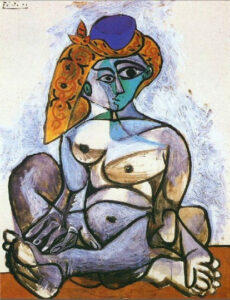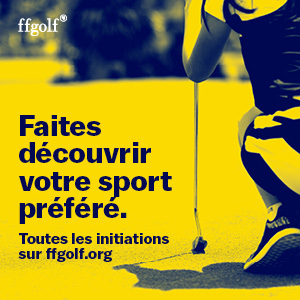Posted on January 22, 2018 in Arts & culture.
Picasso: Voyages imaginaires - from February 16 to June 24, 2018 in Marseille
The Picasso, imaginary journeys exhibition presents at the Center de la Vieille Charité a remarkable collection of works retracing Picasso's travel memories and fictitious itineraries. From the shores of the Mediterranean to the borders of Africa, the work of Pablo Picasso offers a starting point towards an elsewhere, cartography without borders where the arts mingle and where poetry prevails.

Pablo Picasso, Naked Woman with Turkish Cap, December 1, 1955, oil on canvas, 116 × 89 cm. Paris, Center Pompidou, National Museum
of modern art - © Mnam / Cci, Picasso estate 2017
Although he is not a traveling artist, his journey draws a mythological framework that he invites us to explore: "If we marked on a map all the routes by which I passed and if we connected them by a line it would appear perhaps a minotaur".
Apart from his journeys between Spain and France or his trips to Holland, Italy, England and Poland, no country further afield is stamped on his passport. To boats or planes, Picasso prefers the train which brings him back continuously to the beaches of the south. Travelers, his artist, poets and intellectual friends travel the world and send him postcards. Collected by the hundreds and studied for the first time, these images constitute an exceptional source of inspiration for his works.
Unveiling the visual richness of this epistolary relationship, the Picasso, imaginary journeys exhibition reflects the extent of his curiosity, sharpened by a boundless desire to glimpse cultures other than his own. Through a hundred paintings, sculptures, assemblages, drawings in dialogue with masterpieces from the museums of Marseille and the Mucem, the exhibition takes five routes Blue Bohemia, Ghost Africa, Ancient Love, Black Sun and Dreamed Orient, as many journeys in the world. imaginary lair of the genius Picasso.
Picasso and the Russian Ballets, between Italy and Spain. (Exhibition produced by Mucem, with the support of the Museo e Real Bosco di Capodimonte, and organized with Electa).
At the Mucem, the exhibition examines Picasso's privileged links with popular arts and traditions, as they appear in his work as a scenographer and costume designer for Sergei Diaghilev's company Les Ballets Russes. Between 1916 and 1921, Picasso collaborated in four shows for which he produced sets and costumes: the ballets Parade (1917), Tricorne (1919), Pulcinella (1920), and Cuadro Flamenco (1921). This experience exposes the painter to body language and dance, inspiring him with new formal possibilities, which he mixes with elements borrowed from puppet theater, commedia dell'arte, sacred art or even folklore. Spanish.
Confronting the artist's works (canvases, drawings, sketches, set models, costumes created for operas) and objects from the Mucem collections (puppets, posters, votive offerings, etc.), the exhibition shows how Picasso was able to assimilate and reinterpret the figurative traditions of his time, to place them at the center of a new modernity.
“There are travelers who confuse flowers and stars. More than all poets, sculptors and other painters, this Spaniard bruises us like a brief cold. His meditations are stripped in silence. It comes from afar, richness of composition and brutal decoration of the Spaniards of the seventeenth century. Those who knew him remember rapid earthiness that was no longer tests. His insistence on the pursuit of beauty led him on paths. He saw himself more morally Latin, more rhythmically Arabic ”.
Guillaume Apollinaire, "The Young: Picasso, painter", La Plume, May 15, 1905.
Picasso-Méditerranée: an initiative of the Musée national Picasso-Paris
"Picasso-Mediterranean" is an international cultural event which will be held from spring 2017 to spring 2019. More than sixty institutions have jointly imagined a program around the work "Stubbornly Mediterranean" by Pablo Picasso. At the initiative of the Musée national Picasso-Paris, this journey through the artist's creation and the places that inspired him offers an unprecedented cultural experience, wishing to strengthen the links between all shores.
Commissioner:
Old Charity: Xavier Rey, director of the Museums of Marseille; Christine Poullain, honorary director of the Museums of Marseille, chief heritage curator; Guillaume Theulière, curator, deputy director of the Museums of Marseille
Mucem: Sylvain Bellenger, director of the Capodimonte museum in Naples; Luigi Gallo, doctor in art history; Carmine Romano, art historian
Scenography:
Old Charity : e.deux -, Emmanuelle Garcia, Etienne Lefrançois
Mucem: Dodeskaden
Useful information :
Picasso: Imaginary journeys
From February 16 to 24 June 2018
Center of the Old Charity
2 rue de la Charité
& Mucem
7 Robert Laffont promenade
Marseille
- Old Charity: Tuesday to Sunday from 10 a.m. to 18 p.m. - closed Monday and May 1.
- Mucem: every day except Tuesday. 11 am-18pm (February / April) and 11 am-19pm (May / June)
prices :
- full price: 12 €
- reduced price: 8 €
- coupled ticket (Vieille Charité & Mucem): allows the adult public to benefit from access to the 2 exhibitions at the single price of 15 €.
Information and reservations: http://musees.marseille.fr
Drawing Now Art Fair: Tatiana Wolska winner 2024
The invention of language by Gertrude Stein and Pablo Picasso
The history of French women's golf at Golf du Sorbier








